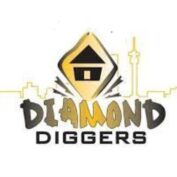Back to: Gemology Tools
Gemology is the study of gemstones and requires specific tools to properly examine, identify, and evaluate them. Some essential tools for gemology are:
- Loupe: A loupe is a small, handheld magnifying tool that allows gemologists to examine gemstones closely for inclusions, clarity, and color.
- Polariscope: A polariscope is used to determine if a gemstone is doubly refractive (having the ability to split light) or singly refractive (only one refractive index).
Refractometer: This device measures the refractive index of gemstones, aiding in the identification of different gem species.
Dichroscope: A dichroscope helps gemologists identify pleochroic gemstones by analyzing their colors when viewed from different angles.
Chelsea Filter: This filter is used to detect the presence of certain elements and impurities in gemstones by observing how they react to specific wavelengths of light.
Microscope: Gemologists use microscopes to examine gemstones for inclusions, growth patterns, and other characteristics at a microscopic level.
- Specific Gravity Balance: This tool helps determine the density and, subsequently, the type of gemstone by comparing its weight in air and in water.
- Spectroscope: A spectroscope is used to analyze the spectrum of light emitted or absorbed by a gemstone, providing clues about its chemical composition.
- UV Lamp: Ultraviolet (UV) lamps are useful for observing fluorescence in gemstones, which can provide insight into their authenticity and origin.
- Diamond Tester: While primarily used for testing diamonds, diamond testers can also help distinguish between diamond simulants and other gemstones.
These essential tools for gemology are crucial for gemologists to accurately assess gemstones’ quality, authenticity, and value.
In any industry, we want to know what tools we NEED and how much money we need to sink. In this video I talk about who needs what tools and how much they cost. What can you buy later, and what should you buy earlier?
